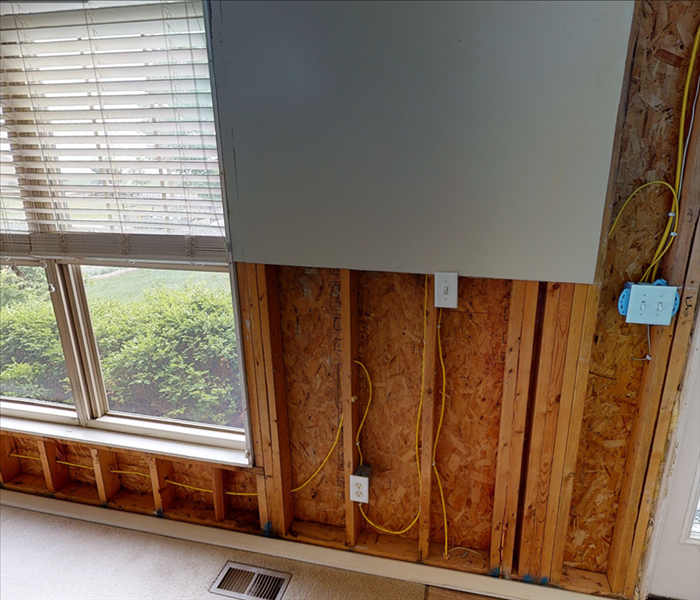The Process of Making a Flood Cut
1/17/2022 (Permalink)
Flooding often leads to water damage, and water damage often leads to the removal of affected items and structures. If your home in Champaign/Urbana, floods during a storm, mitigation experts may have to use a flood cut to determine how much of your wall to tear out. A flood cut is a mark that is made 12-18 inches above the perceivable water damage to a wall to mark the point to which the technicians need to remove the drywall. Here are the steps of using a flood cut.
1. Determine Necessity
A flood cut is not always necessary. If water damage is minimal or the water is clean, the wall probably doesn't need to be removed. When the flooding is the result of a storm, however, the contamination of the water seeps into the walls. It's best, therefore, to mark them with a flood cut and remove the walls, especially if they are saturated.
2. Prepare for Mess
Removing the drywall is usually a pretty messy process. You will probably see the professionals put a tarp down before they begin. It's also advisable for them to wear gloves and protective clothing, especially if they will be removing damp insulation that's behind the wall.
3. Remove Wall
Once there is a tarp down to catch the falling drywall, the demolition process can begin. Technicians start at the flood cut and remove everything below it, ensuring that all the water damage is gone.
4. Clean the Mess
The wall that they tear out has to go somewhere. Another benefit of using the tarp is that it makes for easy cleanup. They can just gather the edges to contain the mess and head to the dumpster.
5. Replace Wall
Many mitigation professionals are also restoration experts. They can put new insulation and a new wall back up and blend the paint so that it looks "Like it never even happened."
If you have flooding in your home, you may need a flood cut to mark the spot where the wall gets removed. Understanding the steps of the process can help you know what's going on when the professionals arrive. If you experience water damage in your home, call us at (217) 355-0077.





 24/7 Emergency Service
24/7 Emergency Service
